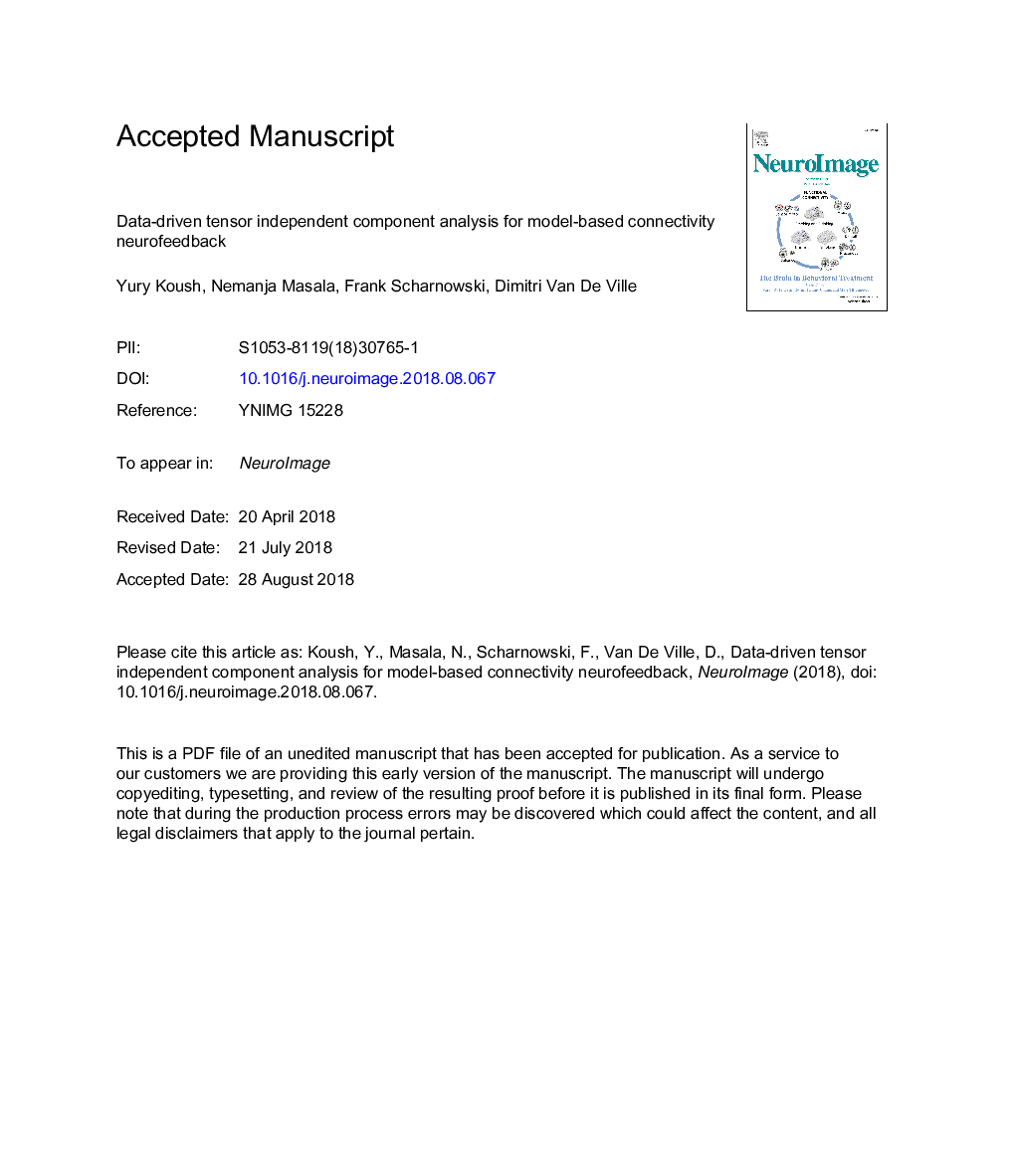| کد مقاله | کد نشریه | سال انتشار | مقاله انگلیسی | نسخه تمام متن |
|---|---|---|---|---|
| 10215559 | 1678892 | 2019 | 34 صفحه PDF | دانلود رایگان |
عنوان انگلیسی مقاله ISI
Data-driven tensor independent component analysis for model-based connectivity neurofeedback
دانلود مقاله + سفارش ترجمه
دانلود مقاله ISI انگلیسی
رایگان برای ایرانیان
کلمات کلیدی
موضوعات مرتبط
علوم زیستی و بیوفناوری
علم عصب شناسی
علوم اعصاب شناختی
پیش نمایش صفحه اول مقاله

چکیده انگلیسی
Neurofeedback based on real-time functional MRI is an emerging technique to train voluntary control over brain activity in healthy and disease states. Recent developments even allow for training of brain networks using connectivity feedback based on dynamic causal modeling (DCM). DCM is an influential hypothesis-driven approach that requires prior knowledge about the target brain network dynamics and the modulatory influences. Data-driven approaches, such as tensor independent component analysis (ICA), can reveal spatiotemporal patterns of brain activity without prior assumptions. Tensor ICA allows flexible data decomposition and extraction of components consisting of spatial maps, time-series, and session/subject-specific weights, which can be used to characterize individual neurofeedback regulation per regulation trial, run, or session. In this study, we aimed to better understand the spatiotemporal brain patterns involved and affected by model-based feedback regulation using data-driven tensor ICA. We found that task-specific spatiotemporal brain patterns obtained using tensor ICA were highly consistent with model-based feedback estimates. However, we found that the DCM approach captured specific network interdependencies that went beyond what could be detected with either general linear model (GLM) or ICA approaches. We also found that neurofeedback-guided regulation resulted in activity changes that were characteristic of the mental strategies used to control the feedback signal, and that these activity changes were not limited to periods of active self-regulation, but were also evident in distinct gradual recovery processes during subsequent rest periods. Complementary data-driven and model-based approaches could aid in interpretation of the neurofeedback data when applied post-hoc, and in the definition of the target brain area/pattern/network/model prior to the neurofeedback training study when applied to the pilot data. Systematically investigating the triad of mental effort, spatiotemporal brain network changes, and activity and recovery processes might lead to a better understanding of how learning with neurofeedback is accomplished, and how such learning can cause plastic brain changes along with specific behavioral effects.
ناشر
Database: Elsevier - ScienceDirect (ساینس دایرکت)
Journal: NeuroImage - Volume 184, 1 January 2019, Pages 214-226
Journal: NeuroImage - Volume 184, 1 January 2019, Pages 214-226
نویسندگان
Yury Koush, Nemanja Masala, Frank Scharnowski, Dimitri Van De Ville,